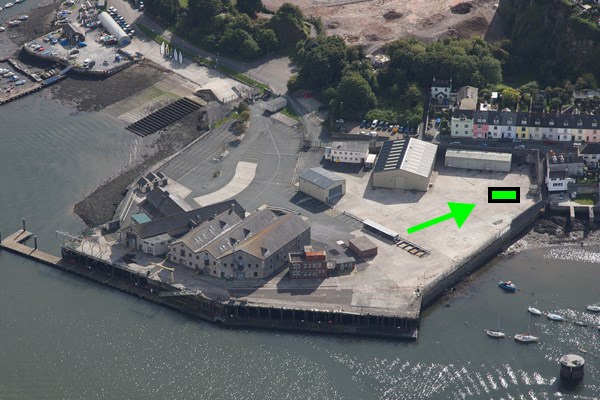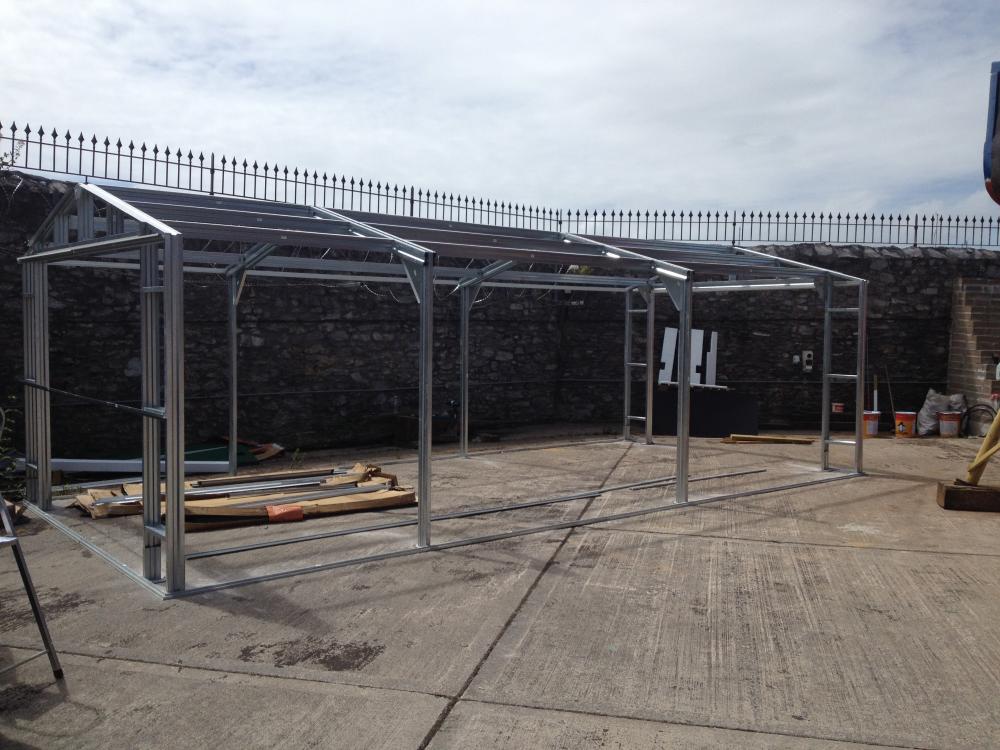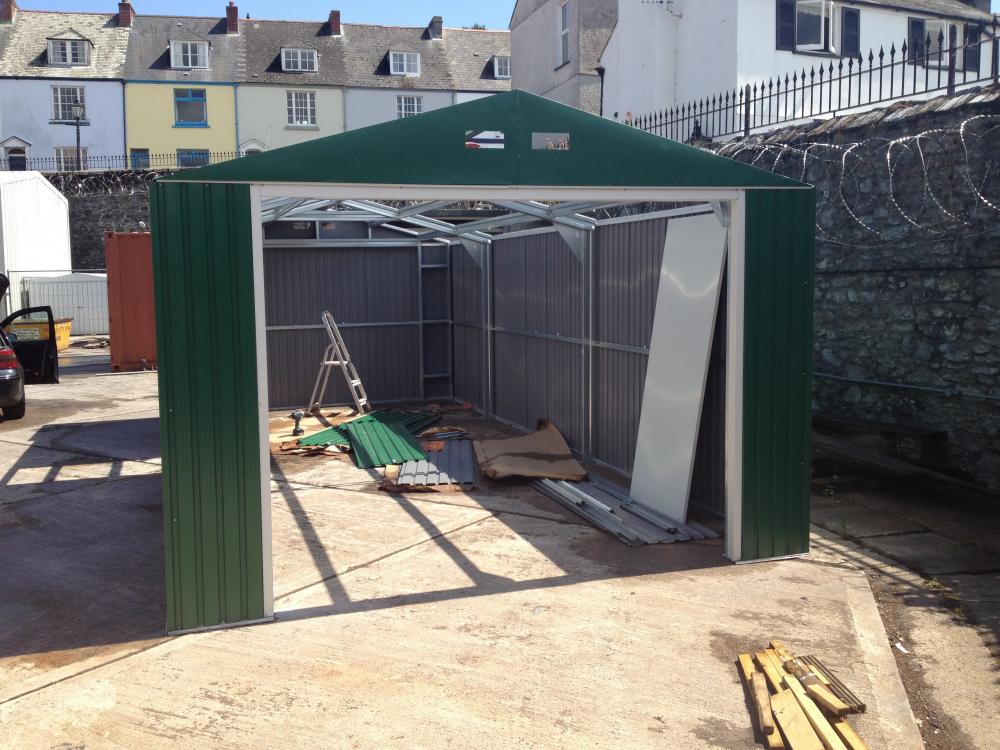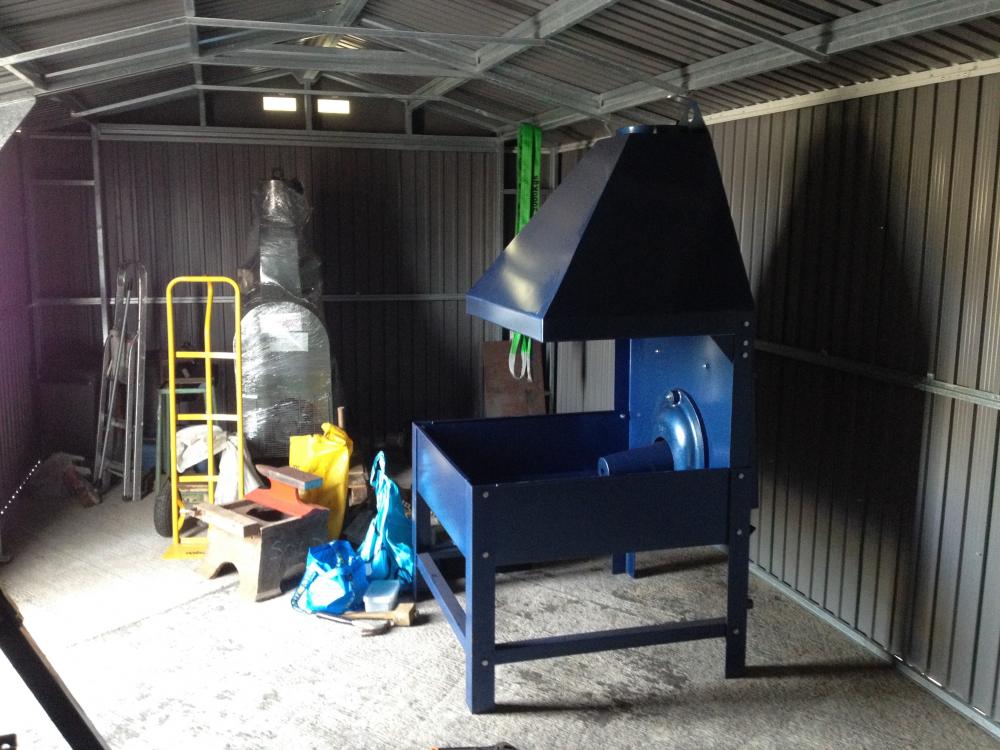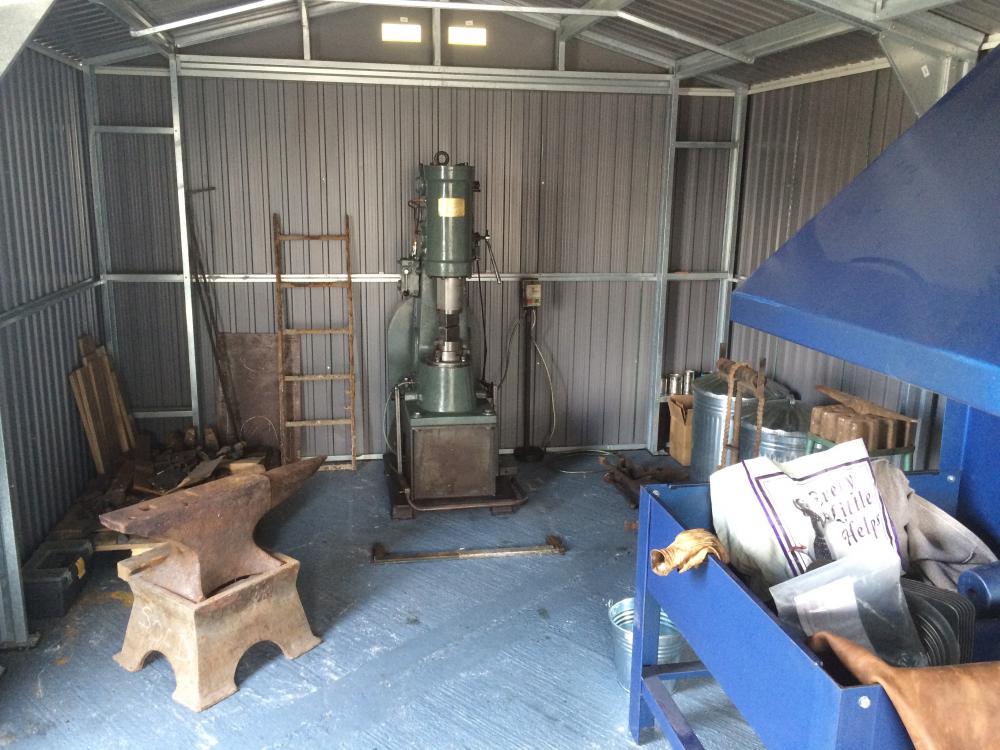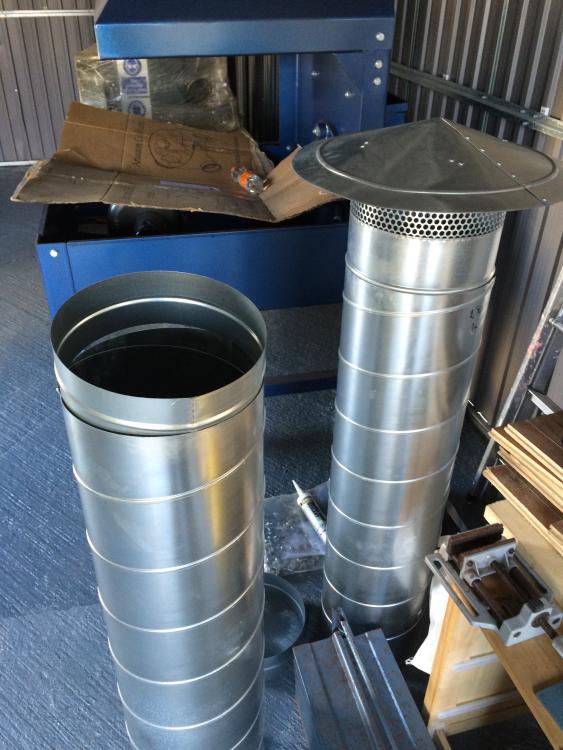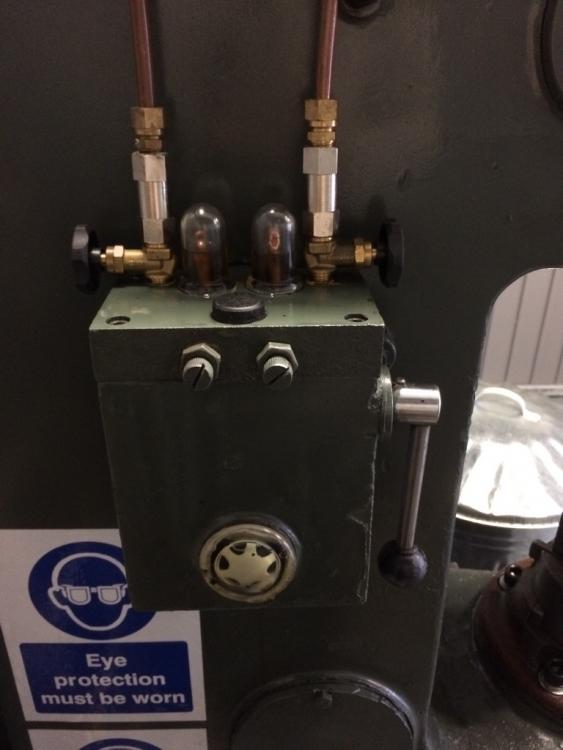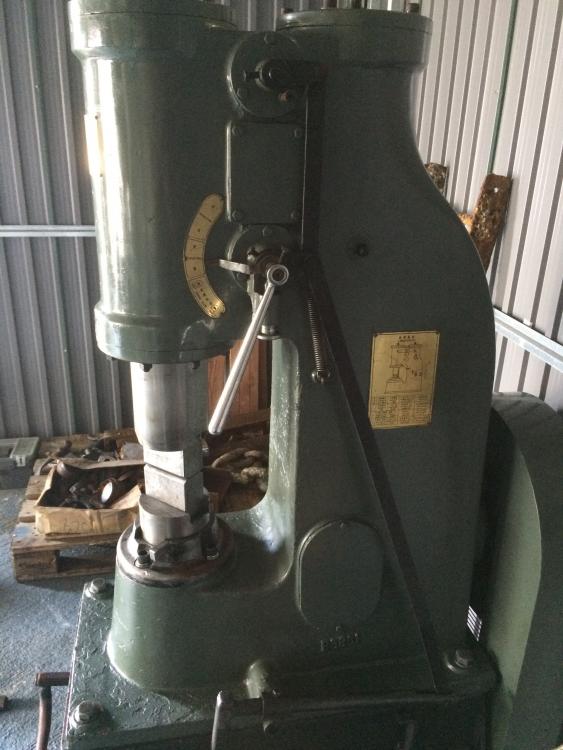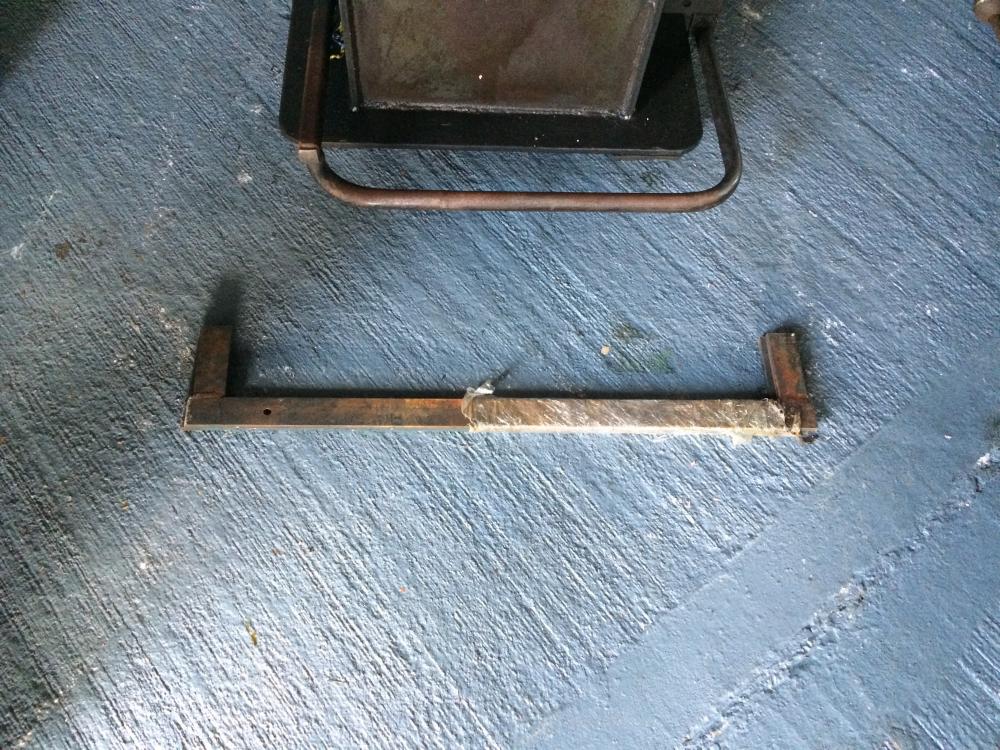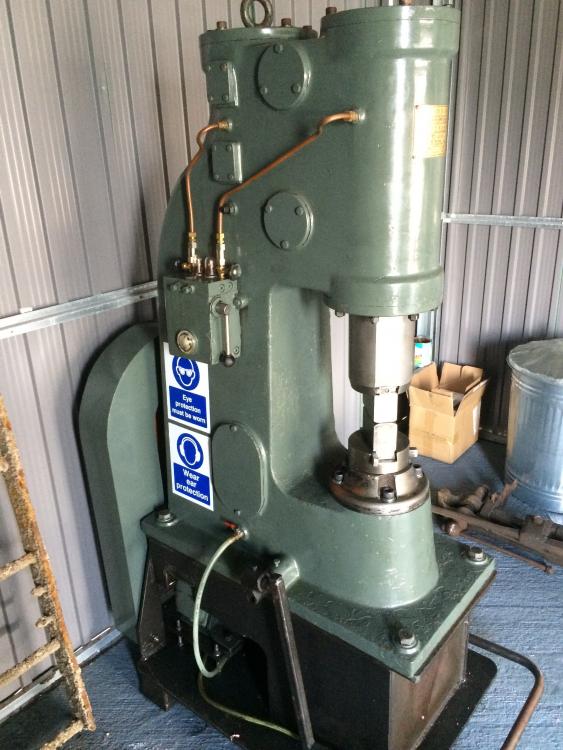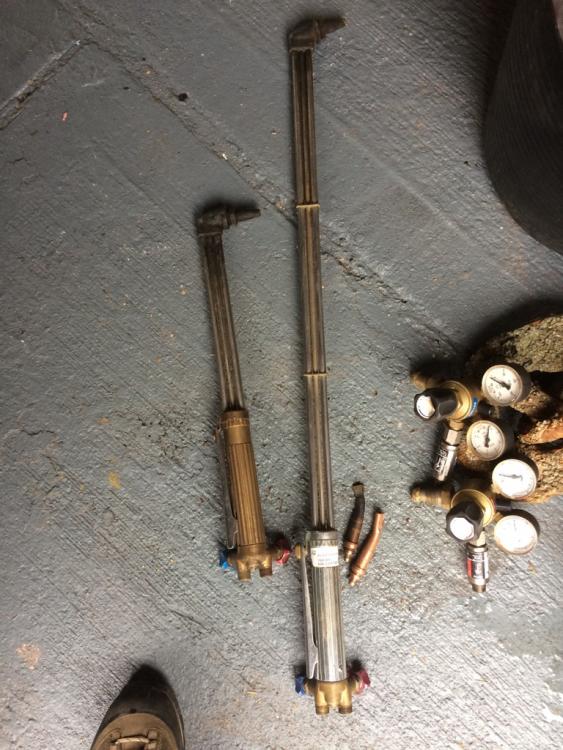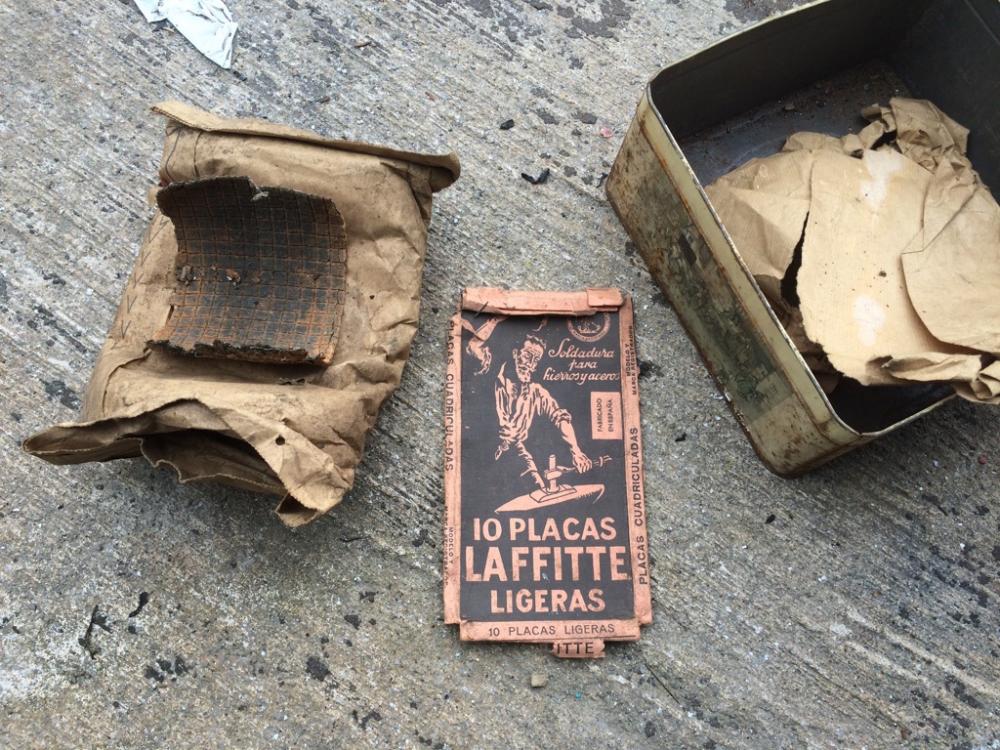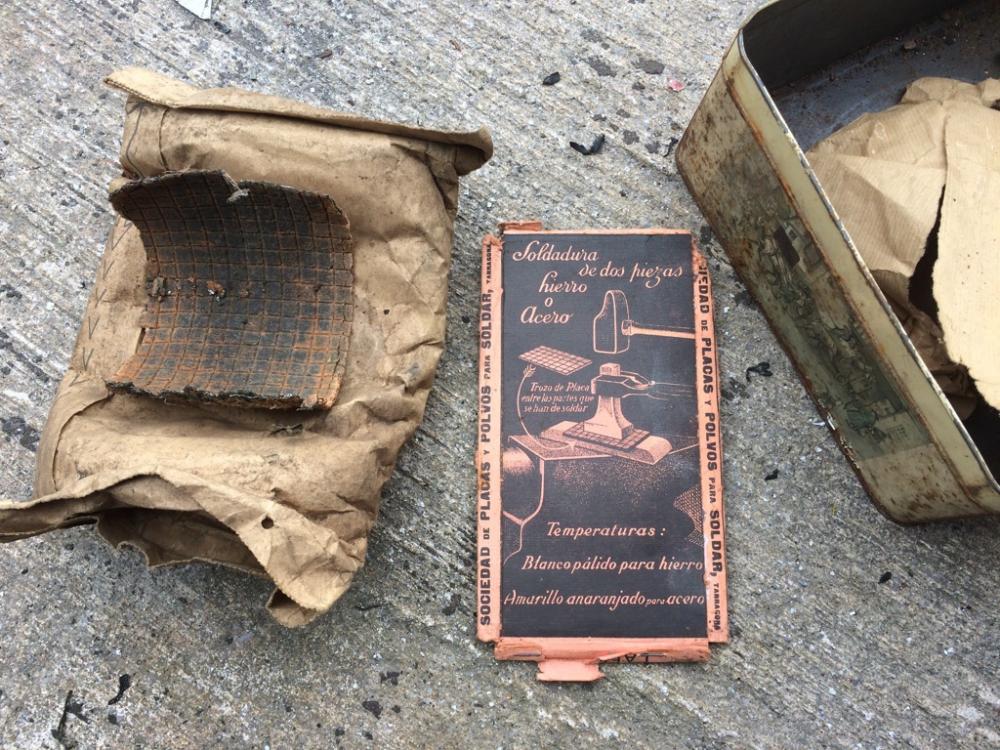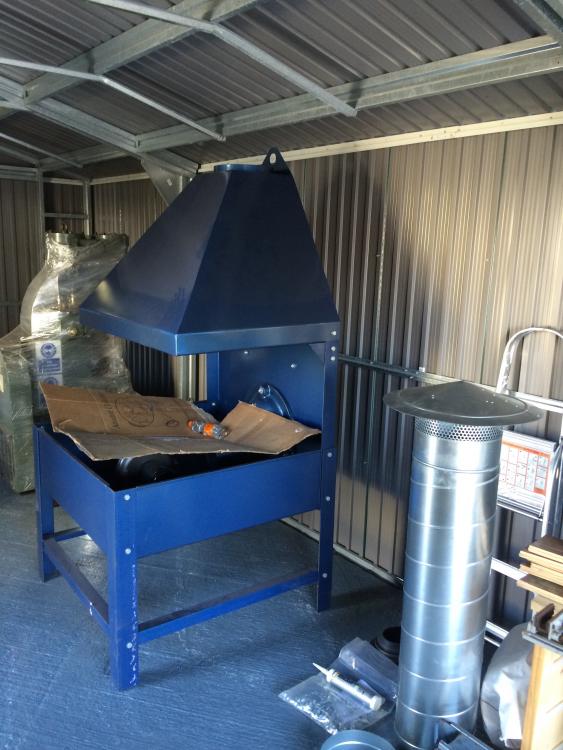-
Posts
116 -
Joined
-
Last visited
Content Type
Profiles
Forums
Articles
Gallery
Downloads
Events
Everything posted by blackleafforge
-
I am working on a sculpture at the moment and followed the advice of a few smiths to get it hot zinc sprayed then etched then painted for the best exterior finish. I naively was a little surprised at the cost (£300 for a tree sitting on a base, aprox 1 meters square). My client has asked for alternatives so I started looking in to it and a traditional proven finish of linseed paint sprung to mind. I am however slightly suspicious of the fact that it does not seem to be widely used by the modern blacksmith community. I rang up one of the few uk suppliers to ask about longevity and application and her claims seemed to be a little to good to be true. She said the the finish would last indefinitely and would just dull very slightly after 10 - 15 years. She also said it had a good degree of flex so would not crack or flake off with thermal expansion and contraction of the metal. Has anyone else used this system? what are your thoughts? Thanks Andy
-
I have a big commission for a sculpture and wanted to find out how much Zink spraying would cost. I also understand from reading others comments that the guy operating the equipment can have a big effect on the work as well. Can anyone recommend a company in the south west that does good work? thanks
-
Wow, thanks for all the responses. With regards to the neighbours, I am within an ex military wharf that is now a business park and is rated for light industrial use. (http://www.yachthavens.com/group/commercial-properties/turnchapel-wharf/)The other companies operating on site do use things like grinders and welders although they are located further away from the public and they use noisy equipment intermittently rather than continuously like I will. They have had some complaints but only relating to working late at night something that I will avoid. The hammer is already on a steel base, resting on a wooden board and with rubber feet, I don't know how I could make it any quieter. I was put in this location by the wharf manager, I did raise the issue at the time and he seemed unconcerned. It would be possible for me to move but it would be a massive pain and take at least a week and some heavy machinery. I have no idea about the law concerning smoke drifting on to someone house, I will look in to it. I am using coal, what solid fuel will be best? I had considered insulation and then rejected it because most of the products I looked at were flammable to some extent, will fibreglass withstand direct contact with burning bits of metal and coal? I do intend to further populate the shop with equipment but will have to start earning to afford them, my wish list in order is currently: Oxy Acetylene bottles and accessories, Welding bench, Band saw, Pillar drill, mig welder, gas forge, grinder, etc etc.... I spent most of the budget on the hammer because a nice one came along and I had seen the effect it can have on productivity. And its cool! My hand tools do most other jobs satisfactory. I have insurance with eastlake and Beachell, and wow are they expensive, £350 per year I think. I will try to re negotiate when I renew. I am a sole trader with no employees. I have thought about producing stuff for all the boat builders in the wharf but most of them want stainless steel and I'm worried about inconsistencies. For example if i make chain I can guarantee breaking weight and some of this stuff may cost someones life if it fails. My intended product is initially small decretive items that I will stock in galleries and sell at fairs, this means the lack of equipment will not be a problem to start as I have designed them around traditional techniques. I have already had some work accepted in to a gallery I now just need to get quicker at producing it! Below is a pic showing my location. Thanks for all the help, really got me thinking!
-
Hi! About 3 years ago I quit my job with the intention of working full time as a Blacksmith and turning my hobby in to a career. I spent a year studying at the Blacksmith college in Hereford then started setting up a shop while working part time to pay the bills. As I have progressed I realise how little I know and as mistakes crop up constantly and prove very expensive both in terms of time and money. I was hoping If I go through my set up so far someone might spot something I’m doing wrong or could do better and give me some tips. Thanks Andy The shed is just over 7 meters long and just under 4 wide, made of a very flimsy corrugated tin wrapped around a frame ( I have already bent it a few times by leaning on it or banging on it with something). Its built in a former military base, you can see how close the houses are, I am slightly concerned I may have a few complaints when I start churning out smoke and using the power hammer. I have the power hammer installed but am still trying to get the VFD to work properly ( I only have access to single phase). I am also trying to install the chimney at the moment, I went through a long design stage trying to work out ways to brace it to the shed so it won't blow over but after doing a trial run I have now decided that its strong enough as it will be seated in the forge hood and braced where it exits the roof, leaving about 1.5 meters sticking up which I think should be ok.
-
I am in the process of fixing a chimney to my forge hood and I have some sealant rated up to 350 F, 177 C. It occurred to me I have no idea how hot exactly it will get. I remember a student leaning forwards when I was at college and getting a big burn on his forehead and the hood often gets too hot to touch, but how hot is that? I know there are a lot of factors, I am using a traditional english design with a big hood over a back blast forge, but I was just curious to hear how hot everyone else hoods are getting.
-
That is a good point about keeping the the tup ram surface clean, I will have to make something that does that job. I just discovered that the c shaped metal sections are to anchor the base down, it had not occurred to me that such a large bit of kit could move! The pipe is just loose, do you need to filter the oil before re-use? A little searching on google leads me to believe that grease zerk points are small apertures through which grease is forced. Would I then need a grease gun as all I have done is slap grease on any part that looked like it moved. From what you guys have said and what I can find online, the lube system works by drawing up the oil from the reservoir through the two pipes. I think the two nuts on the front regulate oil speed but what does the lever and the two taps do?
-
Hi all, I’m sorry for what are probably very stupid questions, but this is my first power hammer and I’m a little confused on a few points. So after a lot of help and advice from very nice people on this site I bought a used C-41-15 Anyang hammer connected via a VFD to a single phase system (will be all hooked up by a professional electrician on Monday). The hammer however has been slightly modified and I wanted to check a few points. First the Hammer control seems to have been connected to the foot pedal in such a way that the idle run, top set and light auto settings are impossible to use (below). The silver handle will not go any higher as it it is stopped by the bar connecting it to the foot pedal. Is this normal? The manual says that the hammer should always be started in its highest position but thats not possible now. Also does this mean the hammer can now not be held in the top position? The hammer was also supplied with 2 c shaped bits of flat metal, what are these for? You can also see the dies are in a diagonal position, can they be repositioned so I can feed work in from the front? The lubrication system does not seem to match the manual, I understand from the seller that it was modified to fix inherent problems in the earlier models. I assume that I still just fill it up until Its half full on the round indicator, or should it be full? Can it be overfilled? The manual talks about excess oil accumulating in the sump that must be drained. How will I know when to do this? Can the oil be reused? The electrical doing the work has asked for an electrical diagram that shows him how to connect it. I have checked the manual supplied and there is nothing like that in it. Is there somewhere I could get the information? Sorry again for all the questions!
-
I have reached the point where I really want the ability to focus some heat on a small area of my work rather than heating it all in the forge. I used some gas briefly a few years ago and found it to be a very useful tool. I am however getting slightly confused with some of the technology and terminology and was hoping for some advice. As I understand it propane is the cheapest option and is primarily used to heat gas forges? can it be mixed with oxygen? Is it the best small scale option for precise heating? And what about Acetylene? I have only ever heard it used in the context of mixing with oxygen, can it be used alone or is it aways twinned with oxygen? Is Oxy Acetylene the more specialist setup? Why use it over propane? I had two gas heads given to me (pic below), Are they generic or does each gas use a specific one? And other than the bottles and pipes is there any other kit that I will need? Sorry for all the questions!
-
Thanks for the info all. If you want to swing by you can have a sheet John.
-

Safety glasses for forging...
blackleafforge replied to elkdoc's topic in Personal Protection Equipment
As I have started to forge weld I have noticed the after image of the metal In my eyesight and received a headache after prolonged work. Consequently I have read a lot of info about cobalt blue filter goggles, Didymium glasses, welding goggles and plain sunglasses. What is the general opinion on the best protection? thanks did you miss the rest of this thread? -
Hi, I found this in a box I got from a retiring smith along with a heap of other stuff. Can anyone tell me what it is exactly? thanks!
-

Help with hammer power options
blackleafforge replied to blackleafforge's topic in Power Hammers, Treadle Hammers, Olivers
Thanks for the info! really appreciated. John linked me to this video that I assume proves the theory : https://www.youtube.com/watch?v=_l0Qh5seBlI -

Help with hammer power options
blackleafforge replied to blackleafforge's topic in Power Hammers, Treadle Hammers, Olivers
ahh, maybe I have misunderstood, perhaps he was advising me to have it as well as a converter and not instead of! -
A while ago I purchased a 25kg Anyang. I only have single phase so I took the advice of a friend (because of my lack of knowledge in this area) and have now ordered an MT3 Transwave Converter Multi-Motor 3.0kw. I then got in touch with John (the very helpful uk distributor of Anyangs) and he suggested I run it off a Variable Frequency Drive. I had no idea that there was an alternative to the converter for running the hammer from single phase. The Transwave converter is costing me almost £700 so £300 would be a significant saving. It seems a bit to good to be true, why would anyone buy a converter? Are there any disadvantages with the VFD? What is everyone else using? Thanks Andy
-

Commercially available hand operated travel forges.
blackleafforge replied to blackleafforge's topic in Solid Fuel Forges
Thanks Wicon, I hadn't come across the Angele version. I wish I had bought it the last time I was in Germany as the shipping cost is huge! -
Im looking for a small hand cranked travel forge to use in demos, the only commercially available model being produce in Europe seems to be the BECMA travel forge: http://www.oezwerk.de/epages/62230868.sf/sec5c36dca2ba/?ObjectPath=/Shops/62230868/Products/%22FR70.M%20mono%22 Has anyone tried them? I also just saw this amazing looking second had one on eBay: ebay link removed Old functioning portable forges seem to come up very rarely and the cost of the German forge is making me look for alternatives but I am not sure about their functionality and reliability. Andy
-
thanks for the info!
-
Hi. I am at the point in setting up my forge building where I can now fit the chimney. I have 2 meters of 250mm ducting + a cap and am trying to decide the optimum length and fitting. I want to stick with the 1meter section because it will be much less prone to damage in the very high winds I get with my forge overlooking the sea. What is the minimum effective length that will still effectively draw smoke away? I have read a lot of contradictory advice about length and wonder what the consensus was. I also wonder if anyone had used the same kind of hardware i have and if so did you brace the ducting to keep it all secure? I was thinking of running some wire from 2 points on the roof and twisting them around the ducting. thanks Andy p.s the roof has a very gentle slope, the distance from the forge to the roof is aprox 35cm and the one meter section would extend 65cm not counting the top that adds another 15cm.
-
Hi, does anyone have a source for black screws, preferably domed and slotted? I can find loads of "Japanned" screws ( cover in a thin black paint ) but nothing hard wearing or a bit more authentic looking. I was thinking of trying to find some steel screws and heating them, lightly texturing the tops and applying the same finish to them as my work, has anyone tried this? What are you guys using? Thanks Andy
-

Liability
blackleafforge replied to Ethan the blacksmith's topic in The Business Side of Blacksmithing
How many practicing smiths rely on a waiver? I have checked and it will cost me about £50 per person to cover them under my insurance, it would be a huge saving if they could accept the risk themselves. -
Hi, I have reached the stage where I need to procure some fuel and after reading this segment in the recent BABA newsletter I am going to try and get some of the suggested Scottish coal: For many years the very best forging coal was Maltby peas. This pit has now closed and the alternative coal wasKel- lingly which has also now closed. A few smiths have been using Welsh steam coal that is fine for general smithing work but has to be broken down to a reasonable forging size. A new mine (opencast I believe) has opened in Scotland and I have been sent a sample to try out using my standard test for forge fuels. My colleague John Beavis and I have tried this coal out and it is very good. It is not as good as the Maltby, but far better than the Kellingly, and at £260.00 per ton plus VAT is a very economical fuel. This coal burns very hot with a low blast (we both use bellows), produces very little clinker and ash, is a low sulphur coal so welds well, has a reasonable burn rate, low smoke once the fire is established, but does not cake up like the Maltby and Kel- lingly; and gives off some surface heat but not excessive. It comes in smith's singles that is fine for most work and comes in 25kg or 20kg bags. The coal merchant is K G Smith and Son, Northampton and is new to me, so I cannot give details on delivery etc at the moment [Note – I’ve bought Monckton coke from K G Smith in 2-tonne bagged loads for years, and they’re a very good firm to deal with – Keith Smith the CEO is very helpful and progressive - DQ], however as the smiths in the area club together to get a full lorry-load down and bagged to the distribution point in Swindon, I know he will deliver local deliveries free, At the moment I am trying to put together an order for a full load, so anyone interested in trying this coal out can get in touch with me for a ton or 1/2 a ton minimum. At the moment we are up to 10 ton and I am sure the coal merchant will hold any full load surplus back to sell on to individuals who are not in a position to order just at the moment. I was wondering if anyone with in the South West and possibly Plymouth, had already organised a delivery I could contribute towards or failing that would anyone be interested in organising a joint delivery to this area? The Author of this review (Hector Cole) lives in Wiltshire, I am trying to gauge if there is the demand to get a bulk delivery further south. Thanks Andy
- 11 replies

